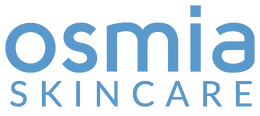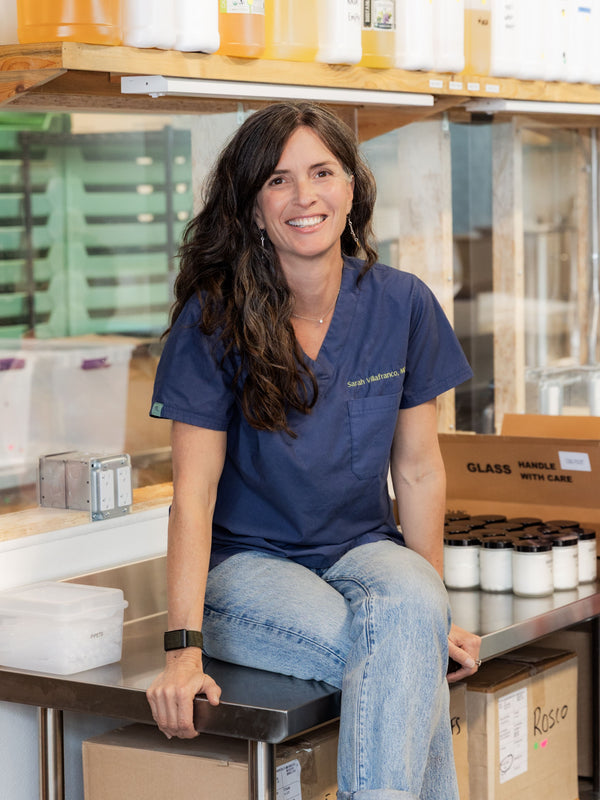There are lots of claims on social media about what dry brushing can do for you, from curing cancer to helping with weight loss to reducing cellulite. It doesn't actually do any of those things, but it does other lovely things, and is worth working into your routine!
WHAT IS DRY BRUSHING?
Dry brushing is the act of brushing your entire body with a stiff-bristled brush. It is done to stimulate blood flow, increase circulation, boost the natural flow of lymphatic fluid, and, of course, exfoliate the body's largest organ—your skin! Lymph, a clear fluid containing white blood cells, digestive fat, and cellular waste, is one of the systems by which your body removes unwanted toxins, bacteria, and viruses. Unlike our circulatory system, where the heart is pumping blood through the body, lymph requires outside forces like muscle contraction to keep it moving back toward the center of your body, where it gets dumped back into your bloodstream. Some lymph channels run very close to the epidermis, the outermost layer of skin, so rubbing a dense bristle brush over your body can actually stimulate healthy lymphatic flow. While our bodies do a pretty fantastic job of eliminating toxins on their own, a little help from the outside can't hurt!
WHAT ARE THE BENEFITS OF DRY BRUSHING?
Many dry brushing advocates claim that this practice can help to lessen the appearance of cellulite and aid in weight loss. Unfortunately, there isn't any medical evidence of dry brushing creating cellulite-free legs and helping us appear 10 pounds lighter, so it's probably best to stick with a healthy diet and regular exercise for now.
Instead, you can think of dry brushing as a feel-good way to support your hard working skin and immune system. When done correctly, it can increase the circulation in both blood and lymphatic vessels close to the skin, unclog pores, and exfoliate your skin.
Another benefit? The quiet, focused ritual itself, and the way it feels on your skin. Imagine waking up and starting your day with an invigorating, meditative self-care routine every morning. It's like a whole-body back scratch. Heavenly, right? Plus, it gets your skin prepared to absorb all the delicious Osmia products you're about to use, from your gorgeous bar of soap to whichever body oil you're going to slather on your wet skin after you shower!
WHAT'S THE HISTORY OF DRY BRUSHING?
Ancient Greeks and Romans used a curved metal object called a "strigil" to scrape their skin after a bath or a workout. In fact, our word “streak” is derived from the Latin word “strigilis”, which means to touch lightly. Many scholars believe Greek athletes used the strigil to comb the sweat from their skin so they could offer it to the Gods as a gesture of thanks. (Luckily for us, this trend has not remained popular.)
The Chinese also harvested a sponge gourd, called the luffa, to encourage circulation and skin revival. These tropical plants thrive in a humid environment. Resembling the shape of a cucumber, dehydrated Luffas are porous and rough. These luffas were used for centuries to scrub and clean household items. It wasn’t until the 20th century, when higher hemlines caused a new craze for skin exfoliation, that we realized the skin benefits of using luffas. The tangled, rough exterior of the luffa gourd did a great job renewing the skin; however, the plant's natural size—that of a rolling pin—was hard to handle. In 1899, Judson S. Snyder of New York, created a puppet-like loofah for easy, hand-held convenience and patented his Improved Bathing Mitten, much like the loofah many people use today.
Finally, in the 1970’s, Finnish nutritionist and naturopath Paavo Airola, promoted using dry sticks, rocks and sand to exfoliate the skin in hopes of detox and curing his patients of various ailments. Ouch! Glad this didn't become standard medical practice, right?
HOW DO I DRY BRUSH CORRECTLY?
Try to find a natural (not synthetic) bristle brush, preferably with a long handle so you can also brush those hard to reach areas of your back. (Many dry brushes are made from boar bristles, but Goop's is made from sisal if you'd rather have a vegan version!) Starting at your toes, make short, sweeping strokes up your legs towards your heart. Be thorough, but use only gentle pressure. Next, follow this same process for your upper body. Starting at the hands, work up your arms, still brushing towards the heart; remember to include your armpits and your groin, both of which have lots of lymph nodes in them! When you reach the torso, move the brush toward your sternum. The whole dry brushing process should take about 3-5 minutes.
When you're finished brushing, enjoy a warm (not scalding) shower to rinse off the dead skin cells, and uncover glowing, invigorated skin. We recommend using our Oh So Soap in the shower as it’s oh so gentle on your newly exfoliated skin. Once you’ve stepped out of the shower, treat yourself to some of our Sunset Body Oil on wet skin, with vanilla and jasmine to lock in all that softness and make you smell divine for the rest of the day!
Don’t forget to clean your dry brush thoroughly with soap (you can use your Oh So) and water at least once a week.
WHO SHOULD AVOID DRY BRUSHING?
Dry brushing can cause some skin irritation for super-sensitive types. So, if you are prone to eczema, or have other skin irritations, you may want to consult your doctor first. Be sure to avoid dry brushing directly over sunburns, scrapes or otherwise irritated skin.
Now that you know all about dry brushing, we hope you'll embrace this simple ritual and make it part of your wellness routine. Happy brushing!








